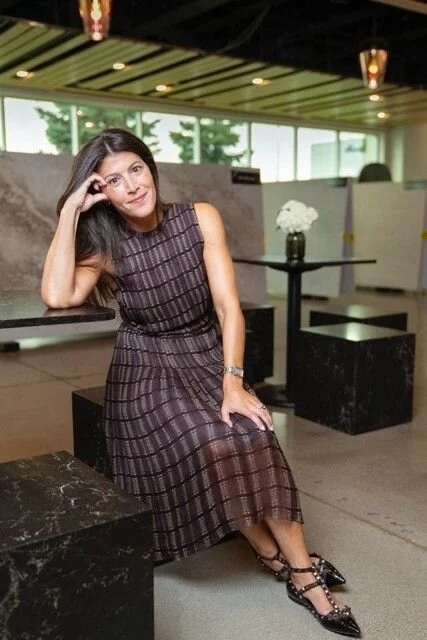Making is as old as learning itself. While the maker movement may only be about a decade old, the human desire to create dates back to the earliest forms of human activity, from making stone tools to drawing on cave walls (Halverson & Sheridan, 2014; Martinez & Stager, 2014). Thinkers such as Pestalozzi, Montessori, and Papert helped paved the way for the maker movement by stressing the importance of hands-on, student-centered, meaningful learning. Instead of viewing learning as the transmission of knowledge from teacher to student, these thinkers embraced the idea that children learn best when encouraged to discover, play, and experiment.
What’s next in student residences
More than 150 attendees from the real estate, development, higher ed, design and construction industries gathered in Chicago to hear expert opinions on today’s student housing market and trends in design, construction and property management for student residences. Christopher Merrill, President and CEO of Harrison Street Capital gave the keynote address with Lisa Skolnik of Intralink Global furthering the discussion.
Student Housing Trends: The Transformation of Co-Living in College
Several months ago we wrote about the new emergence of innovative co-living solutions: development projects where shared living spaces and amenities are attached to private sleeping areas to create a more communal (and affordable) urban housing experience. Many responded that it sounded like grown-ups living in a college dormitory, so it’s only natural that new names in the student housing market are taking this concept one step further.
4 WAYS TO IMPROVE CLASSROOM ACOUSTICS
The relationship between noise levels and academic performance is well documented – so much so that it’s recognized by LEED building certifications. Schools can earn points for classrooms with sound levels below 40dB, which are then used to qualify the school for different levels of certification, and in some instances, financial grants.
But in many classrooms, sound levels average 65dB (Oberdorster and Tiesler, 2005), which can make a big difference to students’ engagement with their learning, and in turn their academic performance. So today I’m looking at 4 ways you can improve classroom acoustics.
To Educate the Next Generation, Reinvent the Classroom
Quick -- pop quiz! More education funding plus smaller class sizes equals better test scores, right? Wrong. Foreign students continue to outperform Americans on all manner of tests: literacy, math, technological knowledge, even everyday skills. That's despite the fact that the United States spends more than $15,000 a year to educate each student from kindergarten through college -- $6,000 more than the average for other economically advanced countries. U.S. schools also reduced average class sizes by over 13 percent between 2000 and 2010; classes are now smaller here than in other similarly situated countries.
Virco Reports Sales Fell 10% in the 1st Quarter
Reflecting what may be a further intensification of seasonality in its core market of public school furniture, fixtures and equipment, Virco reported essentially flat operating results on a 10% decline in 1st quarter revenue for the period ended April 30, 2016.
Kimball participating in Teachers' Manufacturing Bootcamp
Fifteen educators from Dubois, Pike and Perry Counties have been selected for an innovative program that will help them gain important knowledge aboutmanufacturing and the exciting careers available in this sector, which is the backbone of Indiana’seconomy.
From Education to Workplace: Designing a Seamless Transition
We live in an ever changing economy. Students and employees joining the work force today, think, work and act differently than past generations. It is our responsibility as designers to create spaces that respond to this younger generation. They are, in fact, future leaders of our nation.
As a firm, DLR Group is fortunate to practice across multiple sectors, including both education and workplace. Our design teams regularly share valuable information on trends and benchmarks that will shape the future of facilities for both user groups. A common theme we see in both settings is the high degree of flexibility day to day and adaptability year to year. And three kinds of specific spaces are emerging as the appropriate support for the day to day activities of the creative economy: gathering spaces that support synergies among many; pods that encourage small group interactions; and huddle spaces that foster one on one dialogue.
20th Century Design, 21st Century Demands: A Transformation at Smith College
The post-WWII Baby Boom ushered in an era of construction on a massive scale, from the Levittown-like suburbs sprouting up across our cities to an unprecedented expansion of higher education facilities. Today, we continue to learn and live in many of these mid-century structures, but often they are misaligned with the way society has changed in the last half dozen decades. From sustainability and energy performance targets to accessibility requirements, what was once a good fit for a college or university can suddenly be an expensive (and exclusionary) burden.
American Students Need Room to Grow
American students need to hit the books. According to the latest international data, the United States ranks 24th among 34 developed countries in math and science achievement – well below countries like Slovenia, Vietnam and the Czech Republic. Our dismal academic performance has real consequences for our economy. If U.S. students were to match the test scores of their Canadian peers – who rank 17 spots higher– the American economy would generate $10 trillion in additional growth during the next 35 years. That’s an average of $285 billion a year.
Virco Reports Stronger Results for FYE 2016
Virco Mfg. Corporation Friday reported significantly improved operating and net income and stronger cash flow on moderately improved revenue for the Company’s fiscal year ended January 31, 2016.
The Making of New York’s Greenest School
As soon as she saw the overgrown plot of land, nestled among the neat lawns and peaked roofs of two-story homes on the South Shore of Staten Island, Bruce Barrett had a vision of the future. The vice president for architecture and engineering at New York City’s School Construction Authority (SCA) recognized an opportunity to test an innovative concept that could change the way that public schools are made. “When I saw the assignment,” Barrett says, “I thought, ‘Wow, this is going to be our chance to build a net-zero school.’”
The Maker Movement: Trends Impacting the Future of Teaching & Learning
It’s evident that the state of higher education is undergoing turbulent change. On a daily basis, institutions must prove economic viability, deal with competition (both brick and mortar or cloud-based) and fight against the declining perceptions of the value of higher education. It’s time for change! Education leaders are tasked with reacting strategically and proactively planning for the future. Education spaces, technologies and student experiences will need to be aligned. All of these changes will dramatically impact how faculty teach, how students learn, how planners plan and how education spaces are transformed. So the question remains: “What is going to change in our teaching and learning environments?”
KI’S SEATING CHOSEN FOR AWARD WINNING COLLEGE
KI’s award-winning range of educational seating products has been chosen to take pride of place in one of Scotland’s largest colleges. 14,000 individual products across 400 different product lines will be used by City of Glasgow College staff and students in their Riverside Campus on the banks of the River Clyde and will be seen in their new City Campus when it opens in summer 2016.
Why So Many Older K-12 Schools Are Too Large—Yet Running Out of Space
When asked to justify a school renovation or expansion, many K-12 principals say they’re “out of room”—even if enrollment is lower now than it was when the facility was built. On the flip side, there’s a nagging perception that older schools aren’t taking advantage of the space they have, with classrooms and other areas utilized only partially.
Classrooms are starting to mimic the form and function of the office
Technology is not the only factor impacting the way education is being approached in the classrooms of today. While it’s true that many classrooms have begun to adapt to the inclusion of technology in the curriculum, there are also several “offline” options which have clearly trickled down from business design. Globally known companies such as Google and Apple have long been getting attention for the offbeat office culture they are cultivating. This trend has been fanning out into the other companies and industries as well. In-house chefs, rock climbing walls, and unconventional meeting spaces are a few of the unusual features popping up in offices all over the globe. Employers are striving to entice potential job candidates and retain their existing employees through unique and engaging environments. It may well be that the bells have already tolled for the conventional cubicle culture of the past.
Academic Incubators: The New Student Union
The student union has always been a college campus’s shared environment. It’s where students gather and a sense of community is fostered. Student unions historically offered leisure activities like bowling, movie night or student government offices, but today’s students are looking for more. They want to unite for something meaningful – not just for themselves, but for the benefit of their communities. Universities are filling this void with innovation centers and academic incubators.
What Design Trends Are Influencing Education Interiors?
With technology leading the forefront of cultural change, traditional modes of design are being challenged and designers are rethinking best practices. This couldn’t be truer in the education market, where K-12 schools are being overhauled and a new model is emerging. There is a huge desire for schools to move away from the typical square box that served as the classroom for generations, and to embrace more contemporary spaces that inspire new ways of learning. So where do school systems start?
Designing Places with Purpose
While we can appreciate the beauty of the buildings we create and the intelligence of the systems we define, ultimately these things are only successful if they help the people who will use them. Creating successful schools and hospitals is not simply about designing modern facilities with cutting-edge technology. It’s about listening to the pulse of the community that needs these spaces. Understanding its challenges, its economy, its health outcomes, its fundamental needs – and delivering the right solution for that specific community.
Antioch school becomes first in region to adopt standing desks
The Belshaw Elementary teacher introduced what's known as standing desks to his classroom last fall, earning the Antioch school the distinction of being the only one in East Contra Costa County in California -- and possibly the entire county -- that has children doing all their lessons on their feet.

























